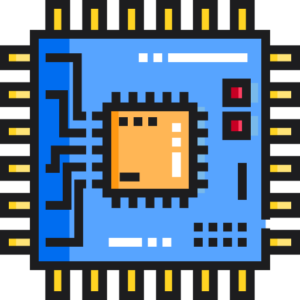Learn the benefits and factors when converting a traditional IRA to a Roth IRA
As the saying goes, “the only constant in life is change.” This rings true for many aspects of our lives, including retirement planning. With evolving tax laws and economic conditions, it’s important to regularly reassess your retirement savings strategies. One potential strategy that may benefit individuals looking to maximize their retirement funds is converting a traditional IRA to a Roth IRA. In this blog post, we will explore the benefits and factors to consider when deciding whether or not to convert your traditional IRA into a Roth IRA. Whether you are an analyst evaluating investment opportunities, an investor looking for ways to boost your retirement income, or an advisor assisting clients with financial planning decisions, understanding the ins and outs of this conversion process can be advantageous. So let’s dive into the details and learn more about this potentially beneficial option for building up your nest egg.
Individual Retirement Arrangements or IRAs are a popular way to save for retirement. Understanding IRA types is a crucial first step towards making informed investment decisions for your golden years. Traditional IRAs offer upfront tax advantages, while Roth IRAs offer tax-free withdrawals in retirement. SEP and SIMPLE IRAs are ideal for self-employed individuals and small business owners. It’s essential to know the contribution limits and distribution rules for each type of IRA to maximize its benefits. Your financial advisor can help you choose the right IRA based on your age, income, and retirement goals. Start planning early and take advantage of the multiple benefits of IRA accounts.
What is a Traditional IRA and Roth IRA
Investing in individual retirement accounts, or IRAs, is a smart way to save for your golden years. Two types of IRAs, Traditional and Roth, offer unique benefits, depending on your financial goals and tax situation. With Traditional IRAs, you can receive tax deductions for contributions made upfront, but will pay taxes on withdrawals in retirement. Meanwhile, Roth IRAs offer tax-free withdrawals in retirement, but contributions are made with after-tax dollars. Understanding the nuances of each IRA can feel overwhelming, but consulting with a financial advisor can help you make the right decision for your financial future. Ultimately, making the right choice between these IRA options can make all the difference in the long-term success of your retirement plan.

Converting a Traditional IRA to a Roth IRA
Converting a Traditional IRA to a Roth IRA can come with many benefits. While the process can be complex, the potential rewards can make it worth the effort. One major benefit is that Roth IRAs are tax-free upon withdrawal, which means that any earnings on your investments can grow tax-free over time. Additionally, there is no required minimum distribution for Roth IRAs, so you can leave your funds untouched for as long as you choose. Another advantage is that you will not have to worry about required RMDs that can raise your tax bill. However, it’s important to consult with a financial advisor to determine if converting to a Roth IRA is the right fit for your specific financial situation.
Tax-free withdrawals at retirement
As retirement approaches, one of the most important considerations is how to fund it. For many, this means contributing to a 401(k) or IRA. With tax-free withdrawals at retirement, these investment vehicles can provide significant advantages. By contributing pre-tax dollars, individuals can potentially lower their taxable income in their working years. And when it comes time to withdraw these funds during retirement, they can do so without being taxed on the contributions or earnings. This can be especially appealing for individuals who anticipate being in a lower tax bracket during retirement. However, it’s important to keep in mind that there are limits to how much individuals can contribute to these accounts each year and that tax laws may change over time. Consulting with a financial advisor can help to navigate the complexities of retirement planning and ensure that individuals are making the most of their opportunities for tax-free withdrawals.
No required minimum distributions (RMDs)
One of the lesser-known benefits of certain retirement accounts is the lack of required minimum distributions (RMDs). For individuals fortunate enough to have saved more than they need in retirement, this can be a game-changer. In traditional retirement accounts, such as 401(k)s and IRAs, RMDs kick in at age 72 and require individuals to take out a certain amount each year. This can be an unwelcome surprise for those who enjoy being in control of their own finances. However, certain types of accounts, such as Roth IRAs and inherited accounts, don’t require RMDs. Clients should consult with their financial advisor to determine if these types of accounts are right for them.
Ability to withdraw contributions penalty-free at any time
One of the most appealing features of many retirement savings plans is the ability to withdraw contributions penalty-free at any time. This flexibility can provide peace of mind for those concerned about unexpected expenses or emergencies. However, it’s important to note that any earnings on those contributions may still be subject to taxes and penalties if withdrawn before reaching retirement age. As always, it’s a good idea to consult with a financial advisor before making any major decisions regarding your retirement savings.
Factors to consider before converting:
When it comes to converting, there are several factors that should be taken into consideration. First and foremost, it’s important to assess the current state of your business and determine whether a conversion is necessary or advantageous. This may include evaluating your current technology infrastructure, considering your budget and resources, and examining the potential benefits and risks associated with conversion. Other important factors to consider may include the size and complexity of your organization, your target audience and their needs, and any legal or regulatory requirements that you must adhere to. By carefully weighing these considerations, you can make an informed decision about whether or not conversion is right for your business and how to proceed if you decide to move forward.
As of 2021, the United States has seven federal income tax brackets based on income level. The lowest tax bracket is 10%, applying to individuals earning up to $9,950, while the highest tax bracket is 37%, applying to individuals earning over $523,600. Understanding which tax bracket you fall into is critical to financial planning, and can help determine your overall tax liability. It’s important to keep in mind that these tax brackets are subject to change from year to year, so it’s a good idea to stay up to date with any updates or revisions to the tax code.
As you plan for your financial future, it’s essential to consider your estimated future income tax bracket. Knowing what bracket you fall into can help you make informed decisions about how much money to save and invest. Factors such as salary increases, changes in tax laws, and life events like marriage or starting a business can all affect your tax bracket. To determine your future tax bracket, consider factors such as your career trajectory, expected salary changes, and potential deductions or credits. If you’re unsure, consult with a financial advisor or accountant for expert guidance. By understanding your estimated future tax bracket, you can make informed decisions that support your long-term financial goals.

How to convert your Traditional IRA to a Roth IRA:
If you’ve been saving for retirement through a traditional IRA, you might be wondering whether it’s worth converting to a Roth IRA. While there are some upfront costs to making the switch, the potential benefits can be significant. Not only will you avoid taxes on future withdrawals, but you’ll also have more flexibility in your retirement planning, including the ability to continue contributing after age 70 ½. However, before making any decisions, it’s important to consult with a financial advisor and consider your individual circumstances, such as your tax bracket and anticipated retirement income. With careful planning, a Roth IRA conversion can be a smart move for securing a comfortable retirement.
When it comes to converting data, there are two main methods: direct conversion and indirect conversion using rollover. Direct conversion involves taking the original data and converting it into the desired output language code, while indirect conversion using rollover involves converting the data into an intermediate format before converting it into the final output language code. The decision on which method to use depends on the specific needs of the project. Direct conversion may be quicker, but indirect conversion using rollover allows for more flexibility and customization. Ultimately, it’s best to consult with an expert in data conversion to determine the best approach for your specific project.
Potential drawbacks or limitations of converting:
When considering a conversion process, it’s important to think about the potential drawbacks or limitations that may arise. While conversions can certainly be beneficial in many ways, there are certain factors that could impact the effectiveness of the process. For example, there may be compatibility issues between different systems or software programs, which could result in errors or data loss during the conversion process. Additionally, the quality of the data being converted could impact the accuracy of the new system or format, which could ultimately affect the functionality and usefulness of the converted data. It’s important to carefully weigh the potential pros and cons of a conversion process and work with experienced professionals to ensure that any limitations or drawbacks are minimized as much as possible.
Tips for maximizing the benefits of converting:
When it comes to converting, whether it’s converting leads to sales or converting an old system to a new one, there are a plethora of tips to consider in order to maximize the benefits. It’s important to approach the process analytically and understand the potential pitfalls and challenges that come with any conversion. By being consultative and involving all relevant parties in the decision-making process, you can ensure that everyone is on board and committed to making the conversion successful. In addition, take advantage of any available resources and tools to streamline the conversion process and minimize disruption to your business or organization. By following these tips and taking a strategic approach to the conversion process, you can reap the fullest benefits and achieve your desired outcomes.
Limitations and exceptions for high-income earners
In the world of taxation, high-income earners face unique limitations and exceptions that can make it difficult to navigate the complex system. Understanding these nuances can make a significant difference in the amount of money owed to the government each year. While high-income earners may face higher taxes, there are also opportunities to take advantage of deductions and exemptions that can lessen the burden. Working with a tax consultant or financial advisor may be a wise investment for those wanting to ensure they’re in compliance with the law while maximizing their benefits. By staying informed and proactive, high-income earners can make informed decisions about their finances and ultimately achieve their financial goals.

Recommendation based on individual circumstances
In conclusion, it is important to note that every individual’s circumstances are unique and should be taken into consideration when making recommendations. Analyzing each person’s specific situation and needs is crucial in determining the best course of action. It is recommended that individuals seek advice from professionals who can provide tailored guidance based on their specific circumstances. Engaging in open and honest communication with these professionals can help clarify any uncertainties and ensure that sound decisions are made. By prioritizing individual needs and seeking personalized guidance, individuals can make informed decisions that are best suited for their circumstances.
In conclusion, understanding the different types of IRAs and how they work can have a significant impact on your retirement savings. After exploring the benefits and considerations of converting your Traditional IRA to the new Roth IRA, it’s clear that this strategy can provide significant advantages such as tax-free withdrawals and no required minimum distributions. However, it’s crucial to analyze your current income tax bracket and estimate future tax bracket before making the conversion decision. Additionally, the method of conversion, whether direct or indirect, should also be carefully considered. While there may be potential drawbacks or limitations for some individuals, there are ways to maximize the benefits by consulting with a financial advisor or carefully planning contributions and conversions each year. And for high-income earners, it’s essential to be aware of any limitations or exceptions regarding IRA conversions. Ultimately, the decision to convert depends on each person’s unique circumstances and financial goals. It’s always best to consult with a professional and consider all factors before making any decisions that could significantly impact your retirement savings. So why not stay informed on market news by allowing push notifications and signing up for email alerts? Retirement planning is an ongoing process, and staying up-to-date can help you make the best choices for your future. Don’t miss out on potential opportunities – start exploring your IRA options today!




